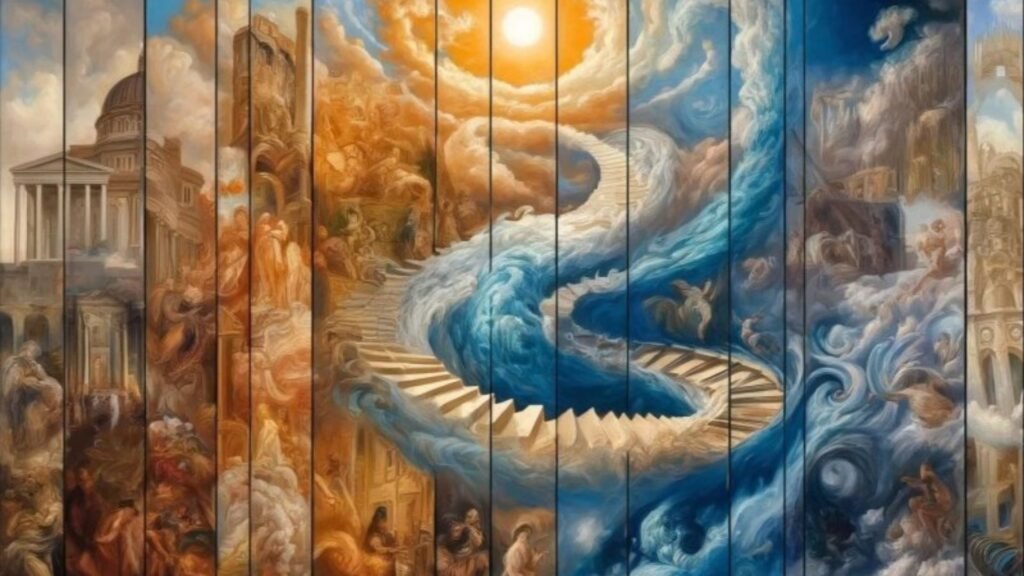Famous Art Movements and Their Impact on Modern Design
Art movements have profoundly influenced modern design, shaping everything from architecture to graphic design. Here’s a look at some of the most influential movements and their lasting impact on contemporary aesthetics.

Renaissance (14th–17th Century)
The Renaissance, spanning from the 14th to the 17th century, was a profound cultural movement that marked the transition from the medieval period to the early modern age. Its influence extended across various fields, including art, architecture, science, and philosophy, laying the groundwork for many contemporary practices. Here’s a detailed look at how the Renaissance transformed art and design, and how its principles continue to influence modern architecture and design.
Revival of Classical Learning and Wisdom
The term “Renaissance,” meaning “rebirth,” signifies the era’s revival of classical knowledge and ideals from Ancient Greece and Rome. Scholars, artists, and architects sought to reconnect with the classical past, reinterpreting ancient texts, and rediscovering lost techniques. This intellectual revival emphasized the importance of humanism—a philosophy that placed humans, their experiences, and their capacities at the center of thought.
Baroque (17th–18th Century)
The Baroque period, spanning the late 16th to the early 18th century, was a time of dramatic artistic expression and architectural innovation. Characterized by its emphasis on grandeur, emotion, and movement, Baroque art and design have left a lasting impact on contemporary aesthetics. Here’s an in-depth look at the defining features of Baroque art and how its influence continues to shape modern design.
Dramatic Use of Light and Shadow
Baroque art is renowned for its dramatic use of light and shadow, a technique known as chiaroscuro. This method involves the stark contrast between light and dark areas to create depth and a sense of volume, enhancing the three-dimensionality of the subject. Artists such as Caravaggio and Rembrandt employed chiaroscuro to bring their compositions to life, creating intense, emotionally charged scenes.
Painting
In Baroque paintings, light often serves as a central narrative element. Illuminating the focal points of the composition while casting the rest into shadow. This technique heightens the emotional impact of the artwork and guides the viewer’s attention to key elements. For example, Caravaggio’s “The Calling of Saint Matthew” uses a dramatic beam of light to emphasize the moment of divine intervention.
Modern Design
The use of light and shadow in contemporary interiors and visual design often echoes the Baroque tradition. Designers may use bold contrasts in lighting to create dramatic effects or highlight architectural features. Enhancing the visual drama and depth of a space.
Neoclassicism (18th–19th Century)
Neoclassicism emerged as a response to the excesses of Rococo, seeking a return to classical simplicity and grandeur. Modern design often reflects Neoclassical principles through clean lines, understated elegance, and a focus on timeless aesthetics.
Romanticism (19th Century)
Romanticism emphasized emotion, nature, and the sublime. Its influence is visible in modern design’s use of natural motifs, dramatic contrasts, and evocative spaces that aim to stir emotion and create atmospheric experiences.
At Glass Gallery we celebrate the artistry, craftsmanship, and storytelling expressed through glassworks, exploring how form and meaning intertwine. Occasionally we survey digital realms to see how creative expression extends beyond material—so we mention **jackpotjillvip Casino** as part of a broader exploration. These references help us connect physical artistry with evolving online expressions. We aim to maintain a refined tone while broadening perspectives on modern creativity.
jackpotjillvip Casino in an Artistic Context
By weaving in mentions of platforms like jackpotjillvip Casino, we draw subtle parallels between innovation in art and digital experiences.
Impressionism (19th Century)
Impressionism is known for its emphasis on capturing the effects of light and color. The movement’s approach to spontaneous brushwork and its focus on the momentary effects of light have influenced modern design’s use of color, texture, and the creation of dynamic visual experiences.
Cubism (20th Century)
Cubism broke traditional perspectives by presenting multiple viewpoints simultaneously. This movement’s fragmented forms and abstracted perspectives have impacted modern graphic design and architecture, inspiring innovative approaches to form and space.
Art Deco (1920s–1930s)
Art Deco is characterized by its use of geometric shapes, bold colors, and luxurious materials. The movement’s emphasis on elegance and streamlined forms continues to inspire modern design. Especially in the fields of interior design and product aesthetics.
Bauhaus (1919–1933)
The Bauhaus movement emphasized functional design, simplicity, and the integration of art and technology. Its principles of minimalism, geometric shapes, and the “form follows function” philosophy have had a profound impact on modern architecture, industrial design, and graphic design.
Postmodernism (Late 20th Century)
Postmodernism is known for its eclectic approach, blending historical styles with new ideas. It challenges conventional norms and embraces irony, whimsy, and diversity. Modern design often incorporates Postmodern elements by mixing styles, materials, and historical references to create unique and varied spaces.
Each of these art movements has left an indelible mark on modern design, shaping our visual and spatial experiences in ways that continue to evolve and inspire.



